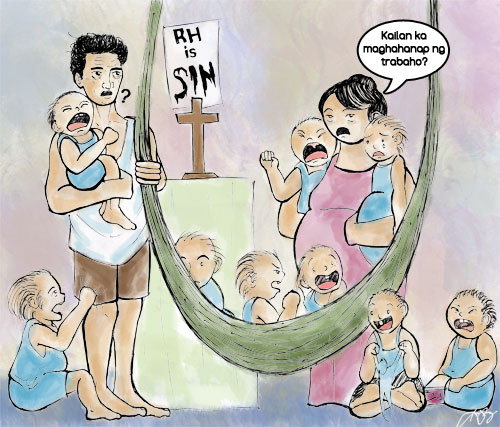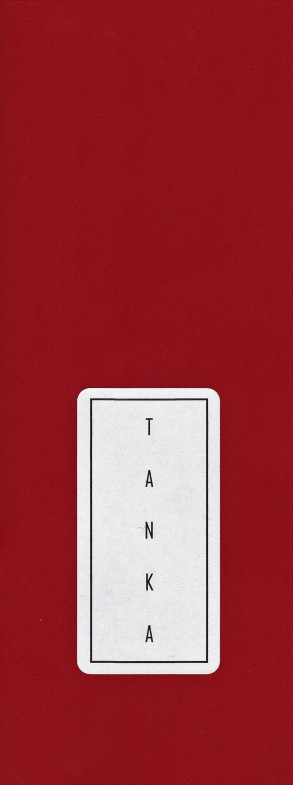Canadian colors, Japanese poetic form in ‘Tanka’

International tax accountants licensed to practice in the Philippines

For FREE immigration consultation, CLICK HERE. Use Code: THE FILAM
By Neil Leadbeater
At first glance, there is an air of mystery about this tall chapbook of 20 pages, saddle-stitched and printed in an edition of 75 numbered copies. On the front cover, instead of a title, there is just the word TANKA. The name of the author is not announced. The cover is blank (red) and the word TANKA is placed on a white sticker—one letter for each line corresponding to the five lines of a Tanka—the red and the white being the colors of the Canadian flag.
The significance of this becomes apparent when one discovers that the central image in the whole collection is that of the maple leaf. The back cover is blank, save for the publisher’s logo. There is no critical commentary or hint about what this collection contains until one opens the pamphlet and looks inside. An explanatory note concerning the genesis of the poem, which one would expect to find in an introduction is given at the end as an afterword. The poet Eileen Tabios wants us to experience the mystery first before she decodes it. I have no criticism with this approach, it is just another way of doing things and it makes for an interesting break with tradition.
Originating in the seventh century, the Japanese tanka—which translates as “short song” —is a 31-syllable poem traditionally written in a single unbroken line but nowadays better known as being presented in a series of 5 lines with a set number of 5/7/5/7/7 syllables per line.
The 35 tanka in this collection employ different variants with regard to syllable count. The first two sections are faithful to the original count but the last section contains shorter lines and syllables. This is because the Japanese language requires more syllables to convey meaning than the English does. The Japan Tanka Poets Club and Haiku Canada both advocate for a maximum of 21 syllables in English but in no set syllable pattern and so, to a certain extent, there is scope for freedom to break the rules and allow for a certain degree of innovation.
Stylistically, there is a progression when Tabios uses her MDR (Murder Death Resurrection) Poetry Generator and the device of sous rature (the crossing out of a word or words within the text, but allowing it to remain legible and in place) to generate new configurations in the middle section and then to excavate them at the close.
This sequence of poems works on at least two levels. On one level as a means to describe our creative thought processes and on another as a metaphor for memory and forgetfulness.
How much do we really remember of our life? The answer is very little…perhaps less than .001 percent. This is less than a small fraction. Tabios employs the literary device of sous rature to illustrate how certain facts are completely forgotten so that very little (just the words placed in bold type) remain. The resulting tankas are fragments of larger episodes—episodes that have been largely forgotten but for a few key words that are embodied in the tanka. The effect is like that of filleting a fish down to the bare bones. In this context, the tanka, as a form of précis, may act as an aide memoire to help resurrect a little more of the picture they are meant to describe but even if they do, that picture will be disarmingly inaccurate because it will be colored by all sorts of prejudices that have crept in ever since.
Referencing red, yellow and green, Tabios reveals that color and the associations that it brings can be a whole story in itself. There are throwbacks to childhood, the mention of a mother, grandmother and grandfather, references to puberty and ageing. At one point the maple is “wide, vivid, promiscuous” and at another it is disintegrating into dust. The term “excavation” used in the final sequence calls to mind the science of archaeology as a means of examining the past through the presence of physical remains. Here, all that remains is the bold text. These are the colors of red and gold that only come in the autumn when sufficient time has elapsed for memories to exist, loom large and then fade into near oblivion. “Childhood is ineffable” says Tabios. At the end of the day, it becomes so elusive, it is not able to be described.
In this collection, inspired by a tanka written by Sheila Murphy in which the first line mentions maple leaves, Tabios builds on and reinvents the form in her own distinctive way. It is a form in which the maple leaf is viewed in several different contexts: in the garden, in the memory, preserved in salt and pressed between the pages of a book. In her hands it crosses continents and becomes something universal that we can all identify with at certain moments in our lives.
Neil Leadbeater is an author, essayist, poet and critic living in Edinburgh, Scotland. His short stories, articles and poems have been published widely in anthologies and journals both at home and abroad. His books include Librettos for the Black Madonna (White Adder Press, 2011); The Worcester Fragments (Original Plus, 2013); The Loveliest Vein of Our Lives (Poetry Space, 2014) and Finding the River Horse (Littoral Press, 2017).
© The FilAm 2018












